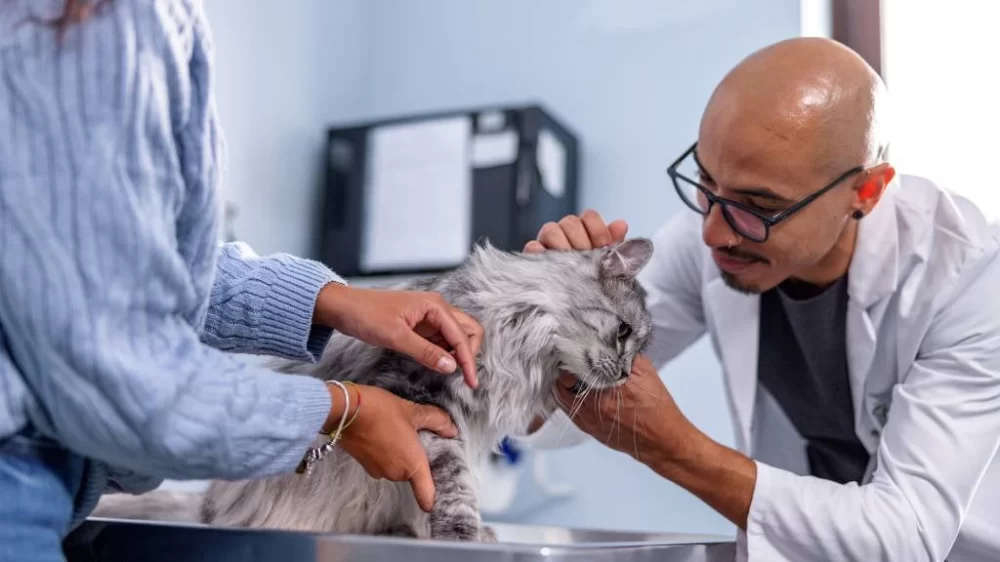Managing Your Pet's Stress During Vet Visits
As a pet owner, taking your furry friend to the vet can sometimes be a stressful experience—not just for you, but for your pet as well. I’ve had my own share of stressful vet visits with my pets, and I know it’s not always easy. Whether it’s the car ride, the unfamiliar smells, or the general anxiety of being at a vet’s office, pets often experience a great deal of stress. However, with a few simple strategies, you can help manage your pet’s stress and make these visits much easier for everyone involved.
1. Understanding the Source of Stress
The first step in managing your pet’s stress is understanding what causes it. For many pets, the vet visit is a time of uncertainty and discomfort. The car ride can be stressful, as some pets associate it with unpleasant experiences. Once at the clinic, the strange smells, loud noises, and the presence of other animals can increase their anxiety. When I first took my dog, Max, to the vet, he was shaking uncontrollably the moment we entered the waiting room. Understanding that his stress stemmed from the unfamiliar environment helped me start thinking about ways to ease his anxiety.
It’s important to recognize that every pet is different. Some may only experience mild stress, while others may react with more intense anxiety. My cat, Whiskers, for instance, would hide under my chair at the vet’s office, refusing to come out. By recognizing their specific triggers, you can better prepare to help them feel more comfortable.
2. Getting Your Pet Used to the Vet’s Office
One way to help reduce your pet’s stress during vet visits is by getting them used to the clinic beforehand. I learned this the hard way when Max had his first visit to the vet, and it ended with him trying to escape the exam room. So, I decided to take him to the vet’s office for short, non-medical visits. These were just trips to get him familiar with the surroundings and the people there. We would go in for a few minutes, get a treat, and leave. Over time, Max began to associate the vet’s office with positive experiences instead of fear.
For pets that are especially fearful, these “practice visits” can be a great way to ease their anxiety. It’s helpful to allow your pet to explore the clinic in a relaxed manner before the actual appointment. This small step can make a huge difference when the real visit happens.
3. Preparing Your Pet for the Car Ride
For many pets, the car ride to the vet is the first part of the stressful experience. I noticed that Max would start panting and pacing as soon as he saw the car. The key to reducing his anxiety was to make the car ride a more positive experience. I began taking Max on short car rides to places he enjoyed, like the park, so that he could associate the car with fun, rather than stress. These little trips helped him feel more relaxed in the car, making the ride to the vet much easier.
Additionally, using a comfortable and secure carrier or seat belt harness can help your pet feel safer and less anxious during the ride. I also made sure to bring along Max’s favorite blanket or toy to provide comfort during the journey. The familiar scent and object made him feel more at ease.
4. Calming Techniques Before and During the Appointment
There are several calming techniques that can help reduce your pet’s stress both before and during the vet visit. One of the most effective methods I’ve used is calming pheromones. There are sprays and diffusers available that mimic the natural calming scents that animals release. I used a pheromone spray on Max’s collar before his vet visit, and it helped him stay much calmer throughout the appointment.
Another effective technique is using treats and praise to create positive associations with the vet visit. For example, I always make sure to have a bag of Max’s favorite treats with me. After the exam, I give him a treat and praise him for being brave. This helps reinforce the idea that the vet visit is a positive experience, which can help reduce future anxiety.
5. Bringing Your Pet’s Favorite Items
Bringing along a familiar item, such as a blanket or toy, can work wonders in comforting your pet during their vet visit. Max always felt better when he had his favorite squeaky toy with him. It gave him something familiar to focus on, helping him stay calm in an unfamiliar place. Whiskers, on the other hand, loved having a soft towel with his scent on it. This simple act of bringing something from home helped him feel less anxious during his exams.
Having a comforting item at the vet’s office can also help distract your pet during the examination, making the process smoother. Whether it’s a blanket, a toy, or even a piece of clothing that smells like you, these small gestures can go a long way in reducing your pet’s stress.
6. Managing Your Own Stress
Pets are highly sensitive to their owners’ emotions, so it’s important to stay calm and composed during the vet visit. I’ve noticed that when I’m anxious, my pets tend to pick up on it and become more stressed as well. To manage my own stress, I take a few deep breaths before entering the clinic and remind myself that the vet visit is necessary for my pet’s health. Staying calm and reassuring helps Max and Whiskers feel more secure, knowing that I am relaxed and in control.
7. Choosing the Right Veterinarian
Finding the right vet who understands your pet’s needs is crucial. I’ve been fortunate enough to find a vet who is very patient and gentle with Max, who has a history of anxiety. Having a vet who is compassionate and experienced with anxious animals makes a huge difference in reducing stress during visits. Don’t hesitate to talk to your vet about your pet’s anxiety, as they may have additional suggestions or techniques for calming your pet during exams.
Some vets offer “low-stress” handling techniques, which can make a big difference for pets that are nervous about being examined. It’s worth researching or asking your veterinarian about their approach to handling pets with anxiety.
8. The Importance of Post-Visit Care
After the vet visit, it’s important to give your pet some time to decompress. I always make sure to take Max for a walk or spend some extra time playing with him to help him unwind. This allows him to shake off the stress and feel more comfortable after the appointment. For Whiskers, I give him some quiet time to himself, allowing him to relax and return to his usual routine.
Additionally, providing a special treat or extra attention after the visit can help create positive associations with going to the vet. This reinforces the idea that the vet visit is something that leads to good things, reducing anxiety for future visits.
Managing your pet’s stress during vet visits takes patience, preparation, and consistency. By understanding what triggers your pet’s anxiety and using a combination of calming techniques, you can make these visits less stressful for both you and your furry friend. Over time, with practice and positive reinforcement, you’ll see a significant improvement in how your pet handles vet visits, making it easier for everyone involved.












